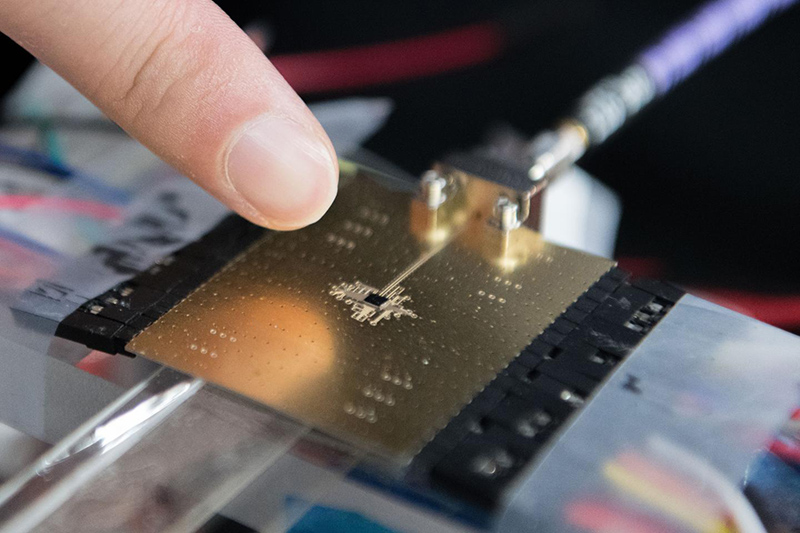
By integrating the design of antenna and electronics, researchers have boosted the energy and spectrum efficiency for a new class of energy-efficient on-chip millimeter-wave antenna, allowing improved modulation and reduced generation of waste heat. The result could be longer talk time and higher data rates in millimeter wave wireless communication devices for future 5G applications.
What is Millimeter Wave?
Extremely high frequency (EHF) is the International Telecommunication Union (ITU) designation for the band of radio frequencies in the electromagnetic spectrum from 30 to 300 gigahertz (GHz). It lies between the super high frequency band, and the far infrared band which is also referred to as the terahertz gap. Radio waves in this band have wavelengths from ten to one millimetrer, giving it the name millimeter band or millimeter wave, sometimes abbreviated MMW or mmW. Millimeter-length electromagnetic waves were first investigated in the 1890s by Bengali-Indian scientist Jagadish Chandra Bose.
What do the new millimeter-wave antennas do?
The new co-design technique allows simultaneous optimization of the millimeter wave antennas and electronics. The hybrid devices use conventional materials and integrated circuit (IC) technology, meaning no changes would be required to manufacture and package them. The co-design scheme allows fabrication of multiple transmitters and receivers on the same IC chip or the same package, potentially enabling multiple-input-multiple-output (MIMO) systems as well as boosting data rates and link diversity.
Researchers from the Georgia Institute of Technology presented their proof-of-concept antenna-based outphasing transmitter on June 11 at the 2018 Radio Frequency Integrated Circuits Symposium (RFIC) in Philadelphia. Their other antenna-electronics co-design work was published at the 2017 and 2018 IEEE International Solid-State Circuits Conference (ISSCC) and multiple peer-reviewed IEEE journals. The Intel Corporation and U.S. Army Research Office sponsored the research.
Key to the new design of the energy-efficient on-chip millimeter-wave antenna is maintaining a high-energy efficiency regardless whether the device is operating at its peak or average output power. The efficiency of most conventional transmitters is high only at the peak power but drops substantially at low power levels, resulting in low efficiency when amplifying complex spectrally efficient modulations. Moreover, conventional transmitters often add the outputs from multiple electronics using lossy power combiner circuits, exacerbating the efficiency degradation.
Beyond energy efficiency, the co-design also facilitates spectrum efficiency by allowing more complex modulation protocols. That will enable transmission of a higher data rate within the fixed spectrum allocation that poses a significant challenge for 5G systems.
The new energy-efficient on-chip millimeter-wave antenna designs have been implemented in 45-nanometer CMOS SOI IC devices and flip-chip packaged on high-frequency laminate boards, where testing has confirmed a minimum two-fold increase in energy efficiency, Wang said.
The antenna electronics co-design is enabled by exploring the unique nature of multi-feed antennas.
The cross-disciplinary co-design could also facilitate fabrication and operation of multiple transmitters and receivers on the same chip, allowing hundreds or even thousands of elements to work together as a whole system. "In massive MIMO systems, we need to have a lot of transmitters and receivers, so energy efficiency will become even more important," Wang noted.
Having large numbers of elements working together becomes more practical at millimeter wave frequencies because the wavelength reduction means elements can be placed closer together to achieve compact systems, he pointed out. These factors could pave the way for new types of beamforming that are essential in future millimeter wave 5G systems.
Power demands could drive adoption of the technology for battery-powered devices, but Wang says the technology could also be useful for grid-powered systems such as base stations or wireless connections to replace cables in large data centers. In those applications, expanding data rates and reducing cooling needs could make the new devices attractive.